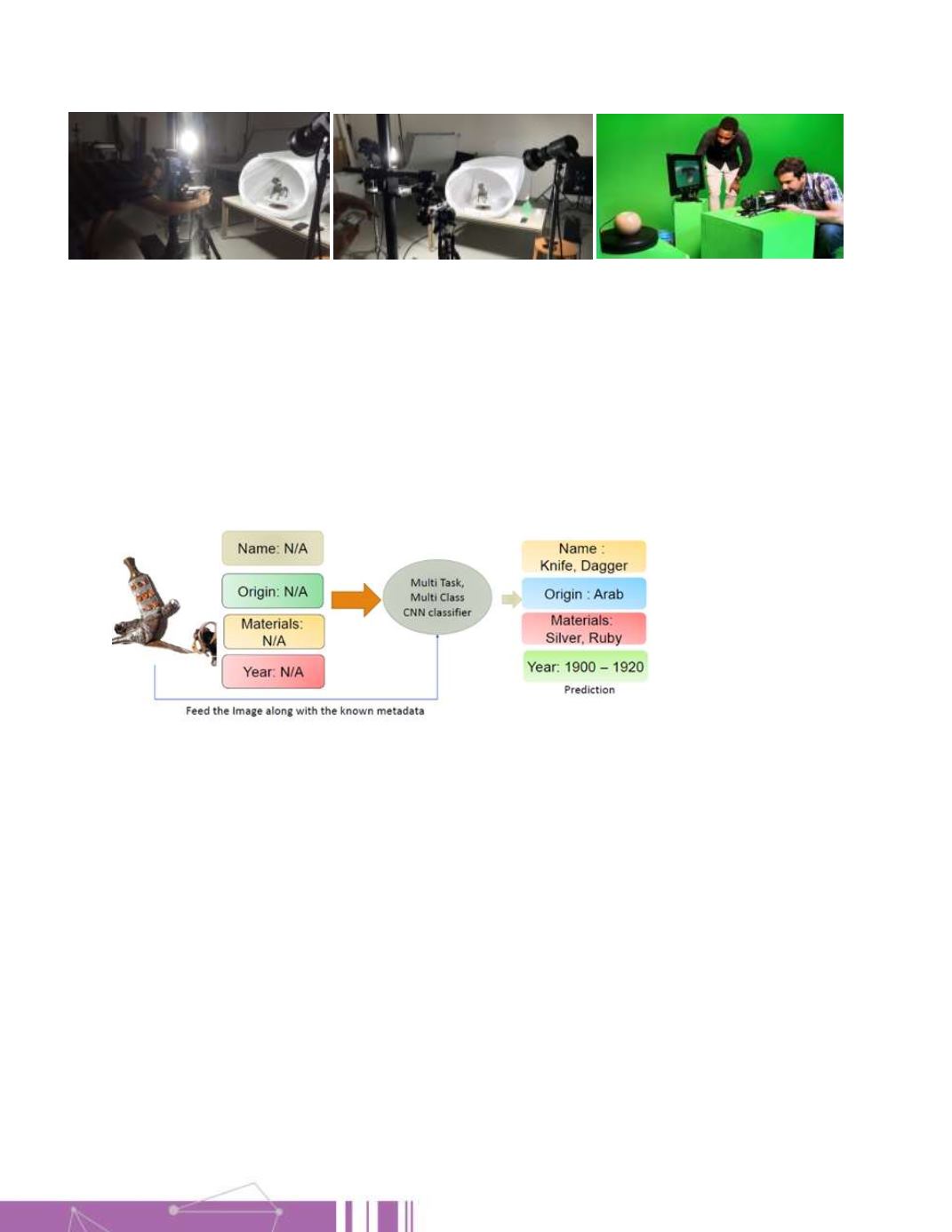

35
Figure 2. The CEPROQHA team capturing various cultural assets at the Museum of Islamic Art (Doha, Dec. 2018)
The project team designed and implemented several innovative, A.I.-based techniques that aim at promoting and increasing the
attractiveness of cultural assets. These techniques leverage recent advances and developments in deep learning, computer vision,
natural language processing, and optimization.
Multitask Art and Culture Classification
Our first approach was designed to enrich cultural assets through metadata completion. This approach is innovative in contrast
to traditional captioning approaches. It uses multitask deep convolutional networks with hard parameters sharing, leveraging
the correlations that exist between the output labels. This resulted in an efficient model that demonstrated a higher
performance in comparison with traditional models.
Figure 3. Multitask Classification model architecture
Multimodal Art and Culture Classification
Our second approach to enrich annotated cultural assets, uses multimodal machine learning. A multimodal deep neural
network inputs multiple types of data, (validated on visual and textual features) and outputs missing data. The network uses
hard parameter sharing to encode a more accurate representation of the asset in the assigned feature space. Experimental
results show that this approach outperforms single input models. This is validated by the fact that deep learning-based
techniques benefit from more data and better representations.
















